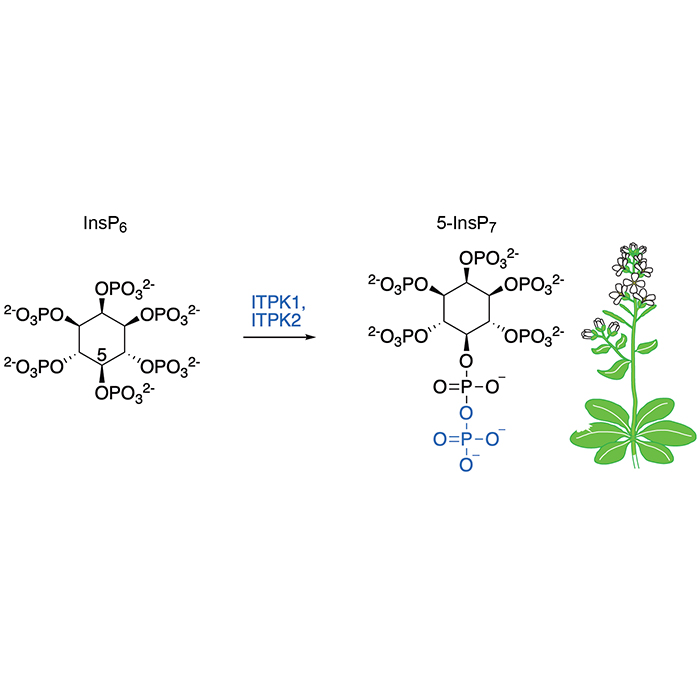New publication in ACS Chemical Biology for Saiardi Lab
Inositol and phosphate, can, in combination, produce a library of cell signaling molecules, simply referred as inositol phosphates. The fully phosphorylated inositol ring known as inositol hexakisphosphate (InsP6) controls various cellular functions directly or indirectly as precursors of inositol pyrophosphates such as InsP7 and InsP8. A new publication from the Saiardi Lab identifies two novel plant (Arabidopsis thaliana) kinases possessing InsP6 kinase activity to generate 5-InsP7. This multi-collaborative study creates a new platform for genetically manipulating InsP7 and InsP8 to study their functions in vivo as well as providing the biotechnological basis to improve crop fitness by modulating InsP6 homeostasis.
Abstract from the article:
Diphospho-myo-inositol polyphosphates, also termed inositol pyrophosphates, are molecular messengers containing at least one high-energy phosphoanhydride bond and regulate a wide range of cellular processes in eukaryotes. While inositol pyrophosphates InsP7 and InsP8 are present in different plant species, both the identity of enzymes responsible for InsP7 synthesis and the isomer identity of plant InsP7 remain unknown. This study demonstrates that Arabidopsis ITPK1 and ITPK2 catalyze the phosphorylation of phytic acid (InsP6) to the symmetric InsP7 isomer 5-InsP7 and that the InsP6 kinase activity of ITPK enzymes is evolutionarily conserved from humans to plants. We also show by 31P nuclear magnetic resonance that plant InsP7 is structurally identical to the in vitro InsP6 kinase products of ITPK1 and ITPK2. Our findings lay the biochemical and genetic basis for uncovering physiological processes regulated by 5-InsP7 in plants.
 Close
Close


